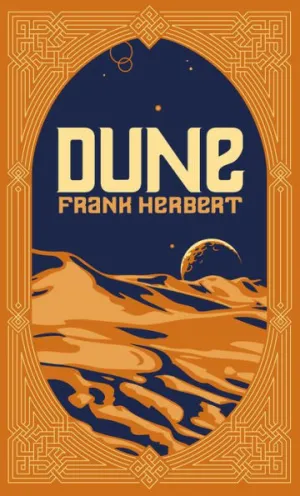With the new movie “Dune” comming up, I randomly stumbled upon a copy of “Dune” by Frank Herbert I had laying around, the epic tale of Arrakis and its characters not only captivated my imagination but also left me pondering the remarkable foresight of science fiction literature. The intricate world-building and visionary concepts in “Dune” planted a seed of curiosity in my mind. What other vintage sci-fi classics have accurately predicted the future, and what are we still eagerly awaiting? In this post, we’ll explore the insights from old sci-fi books and contemplate the state of modern science fiction in terms of predictions and possibilities.

The Old Prophets: What They Got Right
Many vintage science fiction classics have exhibited an uncanny ability to foreshadow technological advancements and societal changes. Consider Isaac Asimov’s “I, Robot,” written in 1950, which introduced the concept of robotics and the Three Laws of Robotics. Asimov’s work not only predicted the rise of robotics but also initiated discussions about the ethical implications of artificial intelligence and human-robot interactions.
Arthur C. Clarke’s “2001: A Space Odyssey” (1968) envisioned a future with advanced AI, space exploration, and a digital assistant much like HAL 9000, which foreshadowed developments such as Siri and Alexa in the 21st century.
The Missing Pieces: What We’re Still Awaiting
While vintage sci-fi got many things right, there are areas where it fell short. The absence of flying cars, widespread colonization of Mars, or practical teleportation, as often portrayed in classic sci-fi works, reminds us that some visions of the future remain elusive. It’s a testament to the complexities of turning imagination into reality.
From Past to Present: Assessing Modern Sci-Fi
As I pondered the achievements and shortcomings of vintage sci-fi literature, I couldn’t help but wonder about contemporary science fiction. What are today’s authors getting right or wrong?
Modern science fiction has embraced new themes and technologies. Works like “The Martian” by Andy Weir demonstrates the human potential for space exploration. Authors are increasingly focusing on ethical dilemmas arising from artificial intelligence, climate change, and genetic engineering, much like classic sci-fi did.
Yet, modern science fiction also faces challenges in addressing the rapid pace of technological change and its societal implications. As we move further into the 21st century, sci-fi authors must grapple with emerging issues like cybersecurity, biotechnology, and the moral dilemmas of a hyper-connected world.
In the ever-evolving landscape of science fiction, vintage classics serve as both a testament to the genre’s enduring relevance and a source of inspiration for contemporary authors. The visions of the past, as depicted in the likes of “Dune,” continue to shape the boundaries of possibility. While old sci-fi classics got many things right, we’re still waiting for flying cars and teleportation. As we look to the future, we can see that modern science fiction offers a more “rushed” into the future, as we have experienced that technological progression is looking exponential more than it looks linear. The genre remains a vibrant tapestry, weaving together the timeless wisdom of the past with the potential of tomorrow.


Recent Comments